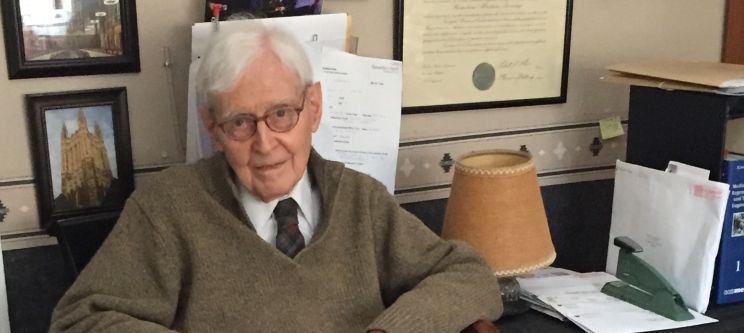Richard Liversage a Generation of Regeneration

“People at Marlboro were very fine; I made a good choice,” says Richard Liversage ’51, a Marlboro “pioneer” who studied biology and chemistry with John MacArthur, Sr., and roomed with renowned ecologist Robert MacArthur. Although he officially retired in 1991 after 44 years at University of Toronto’s Department of Cell and Systems Biology, Richard is still writing research papers on his life’s work: amphibian limb regeneration.
“The Swiss biologist Oscar Schotte, my professor at Amherst College where I got my master’s, was interested in exploring whether humans could regenerate limbs, like salamanders,” says Richard. “He wanted to be the first.” Richard did his doctorate at Princeton University under Elmer Butler, another pioneer in the field, on the subject of limb regeneration in larval newts. “When it comes to regeneration, it turns out, nothing works quite like amphibians.”
After Princeton, Richard moved to University of Toronto where they promised to support his continued research program. He taught some undergraduate courses in his first years there, but by the time he was a full professor he was primarily doing research and advising graduate students, many of whom were co-authors of his more than 80 published papers.
I’ve been on the go for quite some time,” says Richard, 92, whose research has spanned a period of incredible growth in the biological sciences. His most recent paper deals with the specific role of a hormone called insulin-like growth factor in appendage regeneration. “Only recently have we been able to look inside the regenerating limb, at the nerve structures and endocrine hormones that influence new growth.”

